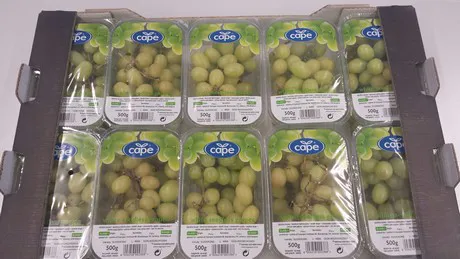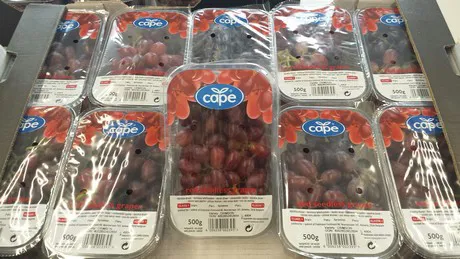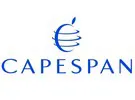Demand for Brazilian grapes is starting to improve now. “It was still calm because of the European grapes that were still on the market, but retailers that hadn’t switched yet, are now switching. This is the result of the quality of European grapes decreasing rapidly,” says Rob Euser of Capespan Continent. “Brazil is sending good volumes to Europe, more than in recent years. Peru is still uncertain. There are rumours that Peru will send large volumes (of white seedless) grapes to Europe, now that the US has plenty of their own production. The question is how much they’ll send, and what kind of effect this will have in the January period in particular. Normally, Peru isn’t on the European market in January because they don’t want to compete with South Africa with white grapes, but that’s not certain now.”
“This week, the first very limited volumes of grapes were harvested and packed in the Transvaal. From the end of week 46, beginning of week 47, we expect to harvest from our own farms in Namibia, and in week 48 we expect to send the first grapes across the water. As it’s looking now, we’ll switch to South African product in week 50. This year, we’re roughly a week earlier than usual,” Rob says. The white seedless from the early regions in the north and Namibia will arrive in week 6 or 7. “This is fine, because India has started playing a more and more dominant role on the grape market in recent years. In the late regions around the Hex, the volumes of white grapes are limited. They mostly have Thompson and Regal available. We see these volumes decreasing every year, because these varieties aren’t doing optimally in this region. The trend that the switch towards India occurs after week 7/8/9 will be continued this way. Looking at coloured grapes, these will last until week 17/18.”
White seedless still dominant
“Peru is currently sending large volumes of grapes across the water, but that’s not very exciting yet. These volumes nicely fill the gap between Brazil and South Africa. Peru mostly has Thompson and Sugraone grapes, South Africa focuses more on development and has Early Sweet and Prime in the early period. Thompson and Sugraone come later, but these volumes from South Africa are decreasing,” Rob continues. “We’re seeing that red seedless is still on the rise, globally. South African is also planting a lot of black seedless. Looking at the European market, the share of white seedless is still dominant, but red and black are getting an ever larger share.”

Water problems
Against all odds, South Africa had a fairly good season last year. Due to the water problems, it was expected the season would end early, but they managed to continue until week 18/19. This put some pressure on prices near the end of the season. “The water shortage definitely had some consequences, but price developments were very stable, which is fairly unique for South Africa. Price level was stable at a very acceptable level. Currently, the water situation is much better. Expectations regarding availability are positive. On the one hand we’re seeing an increase in volume due to new plants and a good setting of the fruit. On the other hand, prices for raisins are strong at the moment, so that part of the fruit isn’t being prepared as table grape. Expectations are positive right now, in any case. The only question that remains is how much damage the plants suffered because of the dry weather of last year. We don’t know yet whether this will have any effect on the quality of the fruit, it’s still too early to tell,” the importer says.
“In the entire grape story, Europe is part of all different sales markets. Looking at our own South African grape production, we’re only a player on the global market, but Europe should be careful that not all players start sending grapes. This isn’t anything new, but we have to continue indicating this will affect the reliability of the players and of quality. We from Capespan are constantly looking for options to shorten our supply chain and to facilitate the relationship between various growers and buyers. This is necessary to remove unnecessary costs from the supply chain, and to be as competitive as possible on the global market,” Rob concludes.
For more information: Rob Euser
Rob Euser
Capespan Continent
Atlantic House
Noorderlaan 147
2030 Antwerp, Belgium
+32 35 46 09 26
+32 486 40 03 58
rob.euser@capespan.eu
www.capespan.com
